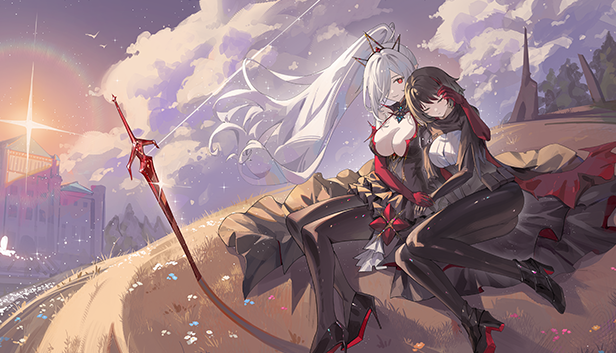
American literature has produced some of the greatest works in history, captivating readers for generations. From F. Scott Fitzgerald’s “The Great Gatsby” to Herman Melville’s “Moby Dick,” these literary masterpieces have stood the test of time and continue to captivate us with their timeless themes and symbolic language. But what makes American literature so unique is its use of symbolism – a technique that adds another layer of meaning to the words on the page. In this blog post, we’ll explore how some of America’s greatest writers used symbolism in their works and why it continues to be an essential aspect of American literature today.
The Importance of Symbolism in American Literature
Symbolism is a literary device that has been used by American writers for centuries to convey deeper meanings and themes within their works. It adds another layer of interpretation to the story, making it more engaging and thought-provoking.
Symbols can take many forms – an object, animal, or even a color – and often carry multiple meanings depending on the context in which they are used. A symbol can represent an idea, emotion or concept that is essential to the overall message of the work.
Symbolism allows readers to connect with the characters and events on a deeper level, as they search for meaning beyond what is presented on the surface. It also adds richness and complexity to the text, allowing readers to explore different interpretations based on their own experiences and perspectives.
In addition, symbolism helps writers create universal themes that transcend time periods and cultures. While specific symbols may have different connotations in various societies, certain emotions such as love or loss are universally understood through symbolic representation.
Symbolism plays a critical role in American literature by providing additional layers of meaning while creating timeless themes that resonate with readers across generations.
The Use of Symbolism in the Works of F. Scott Fitzgerald
F. Scott Fitzgerald was a master of using symbolism in his literary works, particularly in his most well-known novel, The Great Gatsby. One of the most prominent symbols in the book is the green light at the end of Daisy’s dock, which represents Gatsby’s hopes and dreams for their future together.
Another important symbol in The Great Gatsby is the valley of ashes, which represents the moral decay and corruption of society during that time period. This symbol serves as a stark contrast to the luxurious lifestyles of characters like Daisy and Tom Buchanan.
Fitzgerald also uses symbolism in his short stories, such as “Winter Dreams,” where he employs winter as a metaphor for death and decay. In this story, Dexter Green’s obsession with Judy Jones can be seen as representative of America’s infatuation with wealth and status.
In addition to these examples, Fitzgerald often used colors as symbols throughout his writing. For instance, yellow represents corruption or decay while white represents purity or innocence.
F. Scott Fitzgerald’s use of symbolism helped him paint vivid pictures that captured readers’ imaginations and conveyed complex themes without being too explicit or heavy-handed about it.
The Use of Symbolism in the Works of Ernest Hemingway
Ernest Hemingway’s writing style is known for its simplicity, but what may not be immediately evident is the depth of meaning that he conveys through his use of symbolism. Through the selective use of detail and imagery, Hemingway creates a world where every object has significance beyond its literal meaning.
One example can be found in “The Old Man and the Sea,” where the sea itself represents both life and death. The old man’s struggle with the marlin symbolizes humanity’s struggle against nature, as well as our collective desire to conquer it.
Similarly, in “A Farewell to Arms”, rain serves as a recurring symbol throughout much of the novel. It represents both cleansing and renewal, but also foreshadows tragedy when it becomes associated with death.
Perhaps one of Hemingway’s most famous uses of symbolism comes from “The Sun Also Rises.” The bullfight serves as an extended metaphor for life itself – full of beauty and passion but ultimately tragic in nature.
Ernest Hemingway was a master at using symbols to convey complex ideas without relying on flowery language or grandiose themes. His simple yet powerful imagery continues to captivate readers today.
The Use of Symbolism in the Works of William Faulkner
William Faulkner, an iconic figure of American literature, is renowned for his masterful use of symbolism. His works feature complex characters and intricate plotlines often accompanied by rich imagery that serves as a window into the deeper themes explored in his stories.
One such example is “The Sound and the Fury,” where Faulkner employs the image of a dilapidated mansion to represent the decline of the Southern aristocracy after the Civil War. The dysfunctional Compson family also represents this decay, with each character’s flaws contributing to their collective downfall.
Faulkner’s exploration of human nature through symbolism continues in “As I Lay Dying.” The journey taken by Addie Bundren’s corpse symbolizes not only her death but also highlights how grief manifests differently in each member of her family. Each character’s perspective on this journey reflects their individual struggles with loss and acceptance.
In “Light In August,” Faulkner uses light and darkness to explore racism in America. Joe Christmas, a biracial man who passes as white, embodies this dichotomy when he finally confronts his true identity under a beam of light at a church service. This scene reveals how societal norms can lead individuals to deny their heritage or reject those who do not fit neatly into predetermined categories.
William Faulkner’s use of symbolism adds depth and complexity to his already extraordinary storytelling abilities.
The Use of Symbolism in the Works of Truman Capote
Truman Capote is best known for his non-fiction work, In Cold Blood. However, the author also incorporated symbolism in some of his other works, such as Breakfast at Tiffany’s and The Grass Harp.
In Breakfast at Tiffany’s, Capote uses the character of Holly Golightly to symbolize the lost innocence of youth and a longing for a better life. Holly represents the idea of trying to escape from one’s past and reinventing oneself.
The cat in Breakfast at Tiffany’s serves as another important symbol. It represents independence and freedom but also loneliness since it has no owner or home.
In The Grass Harp, Capote employs nature symbolism throughout the novel with trees representing growth and change. Another common motif is birds which can be seen as messengers between different characters.
Capote also used color symbolism in his works with blue often representing sadness or melancholy while red can signify passion or danger.
Truman Capote was able to create meaningful symbols that enriched his stories’ themes without being too heavy-handed or obvious.
Conclusion
Symbolism plays a vital role in American literature. It allows authors to convey complex themes and emotions through the use of simple objects or actions. F. Scott Fitzgerald used symbolism in his works to highlight the emptiness and excesses of the Jazz Age, while Ernest Hemingway employed it to explore masculinity and existentialism. William Faulkner’s use of symbolism helped him create a unique world that explored Southern identity and history while Truman Capote used it to paint vivid portraits of characters.
From The Great Gatsby to Moby Dick, readers can find numerous examples of how writers have used symbolism creatively in their works throughout American literary history. By understanding these symbols, readers can gain deeper insight into the stories they read as well as connect with them on a more profound level.









